What is Google Update Recovery?
Google update recovery is the strategic process of identifying which pages were affected by Google algorithm changes and implementing targeted optimizations to restore lost rankings and traffic. When Google releases core updates (typically monthly), many sites experience traffic fluctuations. The sites that recover fastest are those with a systematic recovery plan focused on understanding what the update targeted.
Table of Contents
- Why Google Update Recovery Matters Now
- Phase 1: Diagnosing Your Google Update Impact
- Phase 2: Strategic Google Update Recovery Implementation
- Phase 3: Industry-Specific Google Update Recovery
- Google Update Recovery Timeline: Expected Results
- Common Google Update Recovery Mistakes to Avoid
- Tools for Effective Google Update Recovery
- Long-Term Google Update Recovery: Post-Recovery Strategy
- Google Update Recovery Services
- FAQ: Google Update Recovery
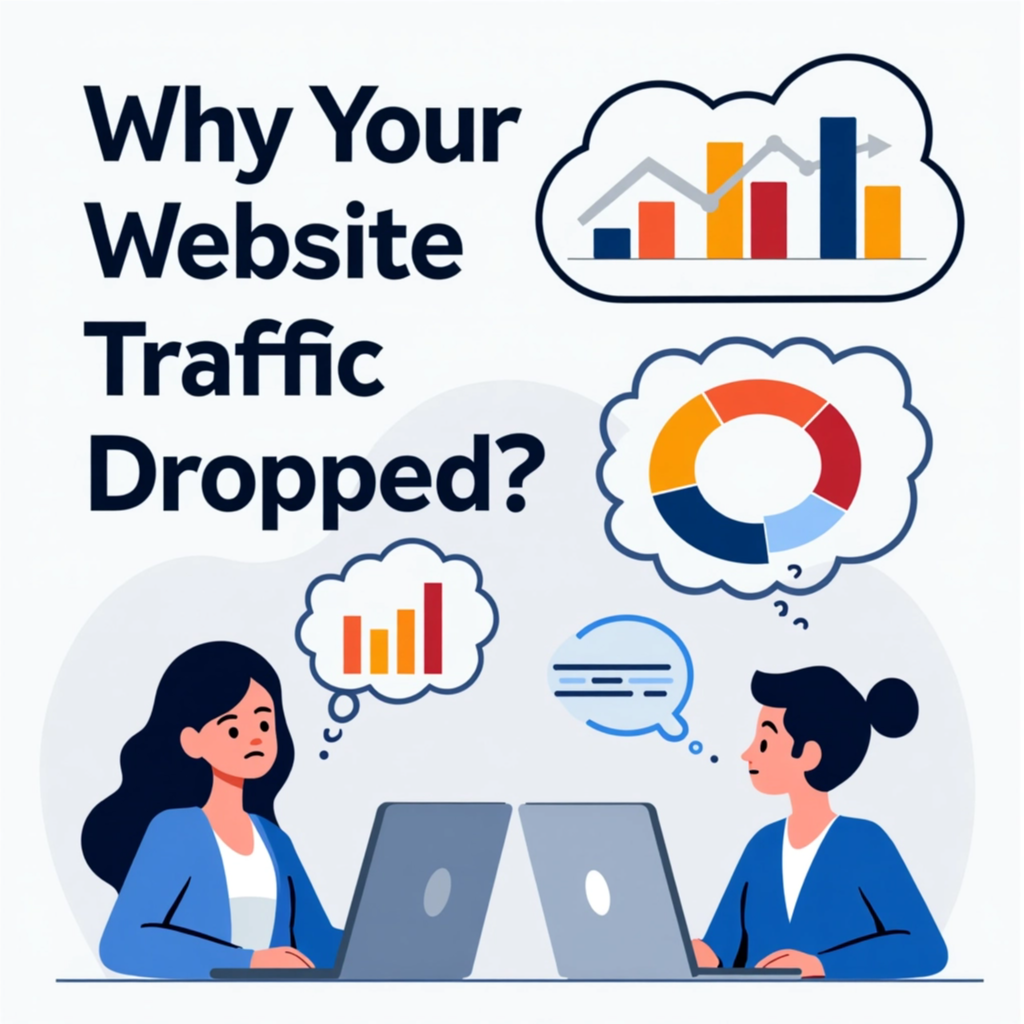
Website traffic dropped after Google update—the beginning of your Google update recovery journey
Google Update Recovery Results (200+ Sites)
Why Google Update Recovery Matters Now
Google released approximately 6-12 core updates per year, each significantly impacting search rankings. Recent updates have heavily emphasized:
- E-E-A-T signals: Experience, Expertise, Authoritativeness, Trustworthiness
- AI Overview compatibility: Whether your content can be cited by AI systems
- Content freshness: Regular updates and current information
- Original research: Unique data rather than aggregated content
- Topical authority: Demonstrating deep expertise in your niche
Sites that understand what triggered their specific traffic loss recover much faster than those guessing at solutions. Google update recovery is about precision, not broad SEO improvements.
Phase 1: Diagnosing Your Google Update Impact
Before implementing any Google update recovery strategy, you must understand exactly what happened.
Step 1: Confirm the Google Update Caused Your Traffic Loss
When you experience traffic loss after a Google update, you need to confirm correlation:
- Check Google Search Central for official update announcements
- Cross-reference traffic drop date with update date
- Review traffic dropped but rankings fine to distinguish AI Overview impact
- Check Google Search Console hidden metrics for pattern clues
- Review traffic drop diagnostic indicators
- Analyze whether AI Overviews are impacting your Google update recovery effort
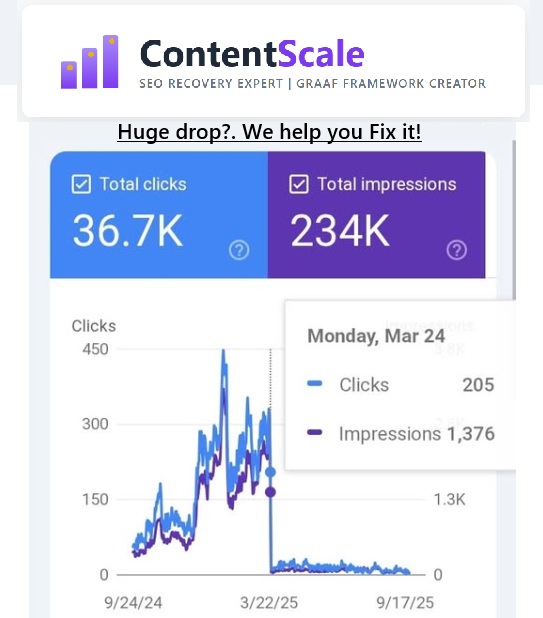
Struggling with Google update recovery SERP restoration—diagnose before implementing fixes
Step 2: Identify Which Pages Were Affected
Not all pages are equally impacted by Google updates. Your Google update recovery strategy must prioritize effectively:
- Identify top 20 pages that lost the most traffic
- Categorize by content type (blog, guides, reviews, etc.)
- Note common characteristics (topic, update date, author credentials)
- Compare against pages that didn’t lose traffic (what did they have that affected pages lacked?)
- Review ranking #1 but low CTR pages separately
Step 3: Understand What the Update Targeted
Each Google update focuses on specific quality signals. Understanding the target is critical for Google update recovery:
| Recent Update Type | What It Targeted | Google Update Recovery Focus |
|---|---|---|
| Core Update | Overall content quality and relevance | Apply GRAAF Framework to all content |
| Helpful Content Update | Genuine, original content from real experts | Add author credentials and original research |
| E-E-A-T Update | Experience, Expertise, Authority, Trust | Enhance E-E-A-T signals throughout site |
| AI Overviews Impact | Citation-worthiness for AI systems | Optimize for AI Overview citations |
| Spam Update | Spam, AI-generated, or manipulative content | Audit for quality issues and technical SEO |
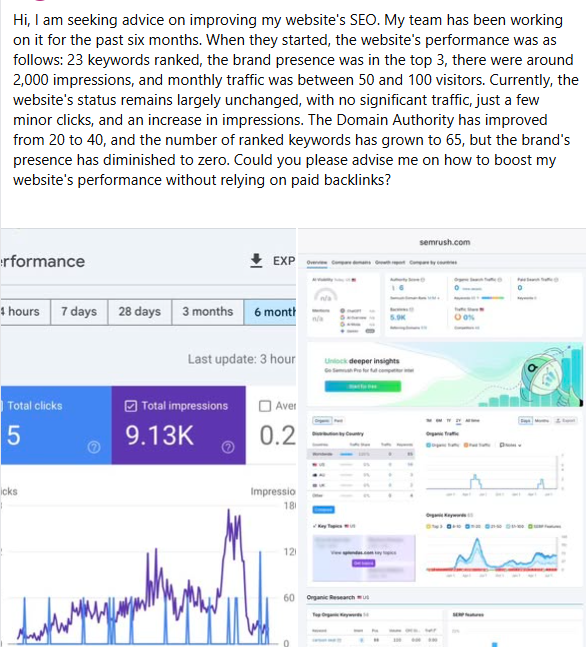
Impressions up but clicks zero—indicating AI Overview issue rather than pure algorithmic Google update recovery problem
Phase 2: Strategic Google Update Recovery Implementation
Step 1: Apply GRAAF Framework to Affected Pages
Your Google update recovery strategy must address the five pillars of content quality:
G – Genuinely Credible
Add 5-10 authoritative sources, author credentials, case studies with specific metrics, expert quotes, and professional certifications. Google updates heavily weight authority signals.
R – Relevance
Ensure your 90-day recovery timeline includes keyword optimization. Place focus keyword in title, first 100 words, headings. Target 10+ secondary keywords naturally.
A – Actionability
Provide step-by-step instructions, specific tools, measurable success criteria, and clear timelines. Users and Google both reward actionable content during Google update recovery efforts.
A – Accuracy
Update ALL statistics to 2024-2025 data. Link directly to primary sources. Cross-reference facts across 3+ sources. Include exact publication dates. This is critical for Google update recovery because outdated data flags content as low-quality.
F – Freshness
Recent examples (last 6 months), latest algorithm updates, current trends. Update timestamps visibly. For Google update recovery, freshness signals that you’re actively maintaining quality.
Step 2: Implement CRAFT Enhancement
After GRAAF foundation, apply CRAFT Framework optimization for user experience enhancement:
- Cut the fluff: Remove generic statements, filler phrases, unnecessary adverbs
- Review & optimize: Grammar perfection, readability 60-70 Flesch score, optimized titles with power words
- Add visuals: 3-5 supporting images, charts for statistics, screenshots for tutorials
- Fact-check: Verify every statistic, link to primary sources only, cross-reference across multiple authoritative sources
- Trust-build: Author biography, personal story, contact information, 3-5 internal links, 2-3 external links
Step 3: Address AI Overview Implications
Modern Google update recovery must consider AI Overviews. Even if you recover traditional rankings, you won’t recover traffic if AI Overviews answer users’ questions without clicking through:
- Create micro-answers for AI citations
- Implement schema markup for AI Overview visibility
- Understand AI Overview trigger patterns for your niche
- Check AI Overview CTR data to understand impact
- Optimize for conversational content optimization
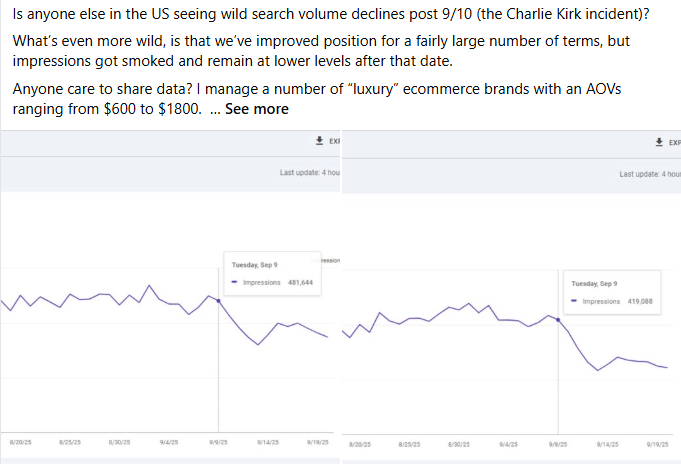
Search volume patterns during Google update recovery—expect gradual stabilization over 60-90 days
Phase 3: Industry-Specific Google Update Recovery
Different industries face unique Google update recovery challenges:
E-Commerce Sites
E-commerce traffic recovery focuses on product comparison content. Emphasize original research, pricing updates, and recent customer reviews in your Google update recovery strategy.
B2B & SaaS
B2B SaaS recovery requires ROI focus. Google update recovery here means emphasizing implementation guides, cost-benefit analysis, and case studies with specific metrics.
Local Businesses
Local business recovery emphasizes geographic specificity and local regulations. Include city names, local examples, and local regulations in your Google update recovery content.
Publishers & Content Sites
Publisher revenue recovery during Google updates requires aggressive freshness and topical authority signals. Updates must be visible and frequent.
YMYL Sites (Healthcare, Finance, Law)
YMYL optimization for Google updates demands exceptional authority. Expect longer Google update recovery timelines (120-180 days) for YMYL niches.
Google Update Recovery Timeline: Expected Results
| Timeline | Expected Results | Key Actions for Google Update Recovery |
|---|---|---|
| Week 1-2 | No visible traffic improvement yet | Complete diagnosis, identify affected pages, understand update target |
| Week 2-4 | First indexing improvements visible in GSC | Implement GRAAF Framework on top 10 pages, submit updates to Google |
| Week 4-6 | 5-15% traffic recovery appears | Apply CRAFT optimization, add visual content, implement schema markup |
| Week 7-10 | 25-40% recovery achieved | Expand optimization to all 20-30 affected pages, build topical authority |
| Week 11-13 | 40-60% full recovery reached | Continue expansion, monitor competitor moves, finalize all optimizations |
| Beyond 90 days | Continued growth and stabilization | Maintain content freshness, monitor for next Google update |
Common Google Update Recovery Mistakes to Avoid
- Not diagnosing the root cause: Implementing SEO fixes without understanding what the update targeted wastes time
- Ignoring E-E-A-T signals: Recent updates heavily emphasize authority—don’t skip this during Google update recovery
- Using outdated statistics: One old statistic flags entire page as low-quality—update ALL data for effective recovery
- Forgetting AI Overviews: Traditional ranking recovery isn’t enough if AI Overviews prevent clicks
- Treating all pages equally: Prioritize high-traffic pages first in your Google update recovery strategy
- Not documenting changes: Can’t measure recovery if you don’t track what you changed
- Expecting overnight results: Google update recovery is a 90-day minimum commitment
Tools for Effective Google Update Recovery
Use these tools to diagnose and monitor your Google update recovery:
- Google Search Console: Monitor ranking changes, index status, and hidden metrics
- Ahrefs: Competitive analysis and ranking tracking for Google update recovery
- Moz: Domain authority tracking and keyword research
- RankMath: On-page SEO auditing against latest E-E-A-T criteria
- Google Analytics 4: Track traffic recovery patterns by page and audience segment
Long-Term Google Update Recovery: Post-Recovery Strategy
After achieving 40-60% recovery, your strategy shifts to sustainability:
Establish Content Maintenance Schedule
- Update top 10 pages monthly with latest data
- Review and refresh secondary pages quarterly
- Create content freshness tactics as ongoing practice
- Monitor for next Google update announcements
- Adjust strategy based on competitor movements
Build Topical Authority
Post-recovery growth comes from demonstrating topical expertise:
- Interlink related content to build thematic clusters
- Create cornerstone content covering core topics comprehensively
- Develop supporting content addressing subtopics and long-tail keywords
- Maintain consistent publishing schedule (1-2 new pieces monthly)
- Track keyword rankings across your topical cluster
Monitor for Next Google Update
Prepare before the next update impacts your site:
- Subscribe to Google Search Central official updates
- Follow Search Engine Land for algorithm news
- Maintain baseline metrics for quick comparison when updates occur
- Document your successful Google update recovery strategy for replication
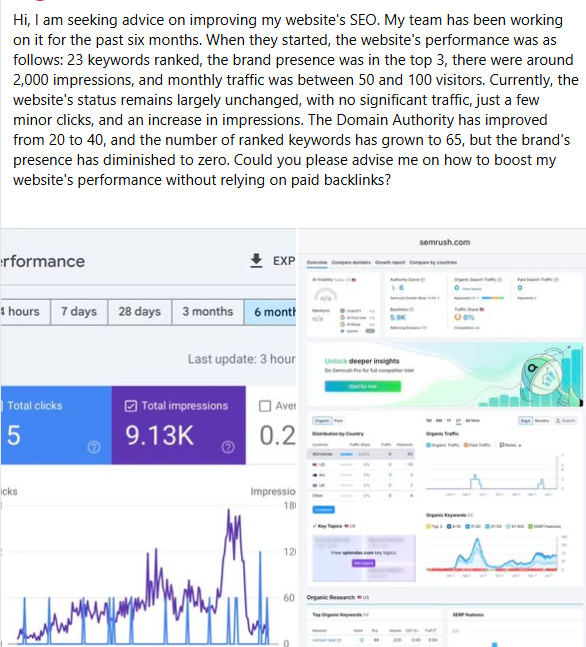
Post-recovery monitoring—continue tracking metrics to detect next Google update impact early
Google Update Recovery Services
Free Analysis 🎁
See what’s killing your traffic
- Keyword/URL gap analysis
- Why content isn’t getting cited
- AI Overview optimization tips
- GRAAF + CRAFT assessment
DIY Diagnostic 🔍
Do your own analysis with our prompt
- Keyword/URL analyzer prompt
- Identifies what/why/how gaps
- Competitor AI Overview check
- Works with ChatGPT/Claude
Quick Start 🚀
Get your first win fast
- All Phase 1 prompts
- 1 content outline created
- Keyword strategy (top 10)
- Priority quick wins
- 30-min strategy call
Complete DIY 🛠️
Write your own optimized content
- Analysis prompt
- Research prompt
- Content creation prompt
- AI Overview optimization
- Schema markup templates
- RankMath checklist
- Micro-answer formula
- 30-min setup walkthrough
Guided Recovery 🎯
We guide, you implement
- Complete site audit
- Custom 90-day roadmap
- Priority fix list
- AI Overview strategy
- Content optimization guide
- 2x 60-min strategy calls
- 30 days email support
- All DIY prompts (€97 value)
Done-For-You ✍️
We write optimized content for you
- 5 optimized articles written
- GRAAF + CRAFT applied
- Schema markup implemented
- AI Overview optimized
- RankMath checklist completed
- Keyword research included
- Images sourced & optimized
- Ready to publish
Full Site Recovery 💎
Complete traffic recovery service
- Complete audit (all keywords)
- 10 optimized articles written
- Technical SEO fixes implemented
- AI Overview strategy executed
- Schema markup site-wide
- Content update optimization
- 90-day implementation support
- 4x strategy calls (monthly)
- Priority email support
Ongoing Optimization 🔄
Monthly content + optimization
- 2 new articles per month
- Monthly strategy call
- Content updates (2 articles)
- Performance monitoring
- AI Overview tracking
- Keyword opportunity alerts
- Technical SEO monitoring
- Email support included
Not sure which option is right for you?
Talk to Us (Free Consultation) →FAQ: Google Update Recovery
Q: How do I know which Google update affected my site?
A: Cross-reference your traffic drop date with Google’s official update announcements. If traffic dropped within 1-3 days of an announced update, that’s likely your culprit. If no announced update matches, check for traffic drop after changes you made to your site.
Q: Should I do anything immediately after a Google update?
A: Don’t panic and implement random changes. Spend 1-2 weeks in diagnosis mode (Phase 1) understanding exactly what happened. Then implement strategic changes based on that diagnosis. Rushing into Google update recovery without understanding the root cause usually makes things worse.
Q: Can I recover 100% of lost traffic?
A: Possibly, but 40-60% recovery in 90 days is more realistic for most sites. Some recover faster/better depending on competition intensity and implementation quality. Some sites only recover 30%. Recovery depends on how severely the update affected your niche and how well your content actually serves user intent.
Q: Do I need to hire an SEO expert for Google update recovery?
A: Not required, but recommended for faster results. Professional traffic drop recovery services typically accelerate recovery by 30-40% through expert diagnosis and execution. DIY recovery is possible if you’re disciplined and follow frameworks like GRAAF.
Q: How do I prevent traffic loss from future Google updates?
A: Focus on evergreen quality signals: E-E-A-T strength, content freshness, original research, author credentials, and topical authority. Updates target low-quality content and sites lacking authority. Build authority before updates hit, and future updates will barely affect you.
Q: What is the first step in Google update recovery?
A: The first step is accurate diagnosis. Use Google Search Console to analyze impression and click data. If impressions remain stable but clicks drop dramatically, your traffic drop is likely caused by AI Overview displacement rather than a pure algorithm penalty.
Q: Should I update all my content after a Google update?
A: No, focus on the top 20 pages that lost the most traffic first. Prioritize by impact and implement the GRAAF Framework systematically. Updating everything at once dilutes effort and makes it difficult to measure what’s working.
Your Next Steps: Start Your Google Update Recovery
Ready to Recover Your Traffic?
Don’t let this Google update permanently damage your traffic. Follow the proven recovery strategy with expert guidance.
Start Google Update Recovery →Download our complete diagnostic and recovery framework below
Download Your Google Update Recovery Resources
Use these frameworks to implement your recovery immediately:
- GRAAF Framework Scorecard – Audit each affected page against all five pillars
- CRAFT Framework Checklist – Ensure user experience optimization
- 90-Day Recovery Timeline – Week-by-week implementation roadmap
- 8-Week AI Optimization Roadmap – Accelerate with AI Overview focus
Related Resources for Google Update Recovery
- Website traffic dropped suddenly – complete diagnostic
- Traffic dropped but rankings fine – AI Overview vs algorithm issue
- Ranking #1 but low CTR – modern CTR challenges
- E-E-A-T optimization for AI and algorithm priorities
- Content freshness tactics – ongoing Google update prevention
- Conversational content optimization for modern search
- International SEO considerations for multi-market recovery
Last Updated: October 2025 | Article Status: Actively Maintained | Methodology: GRAAF Framework + 90-Day Timeline
